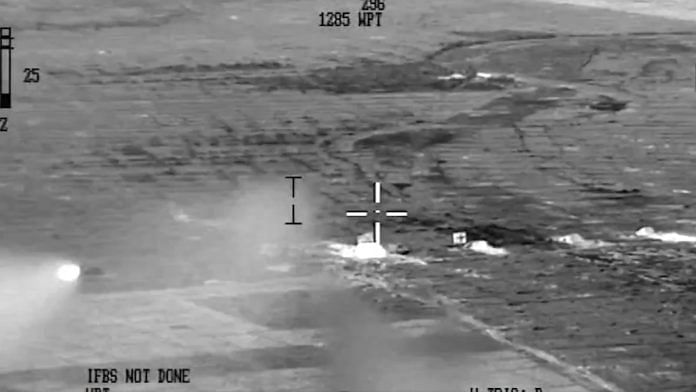Thank you dear subscribers, we are overwhelmed with your response.
Your Turn is a unique section from ThePrint featuring points of view from its subscribers. If you are a subscriber, have a point of view, please send it to us. If not, do subscribe here: https://theprint.in/subscribe/
During the recent conflict, Pakistan had literally no answer to India’s missiles, drones, unmanned air vehicles which ended up with not only decimation of some of the Lashkar-e-Toiba and Jaish-e-Mohammad terrorist bases but also with serious damages to their frontline runways and vital military bases. When Pakistan tried to retaliate with drones, missiles and aircrafts, our air power, air defence systems and anti-drone systems proved to be superior and successfully repelled their attempts again and again. What shocked Pakistan, surprised rest of the world and brought joy to own citizens was the fact that most of the weapon platfoems and the air defence systems and anti drone systems used were ‘Made in India’.
This changes the equation between India and our immediate adversaries and also with other countries as far as defence equipment and their production is concerned. Our successes in Operation Sindoor where we outrightly dominated the Pakistanis in weapon systems and equipment has made the world sit up and notice the scientific and technological advances we have made in defence production.
It is a well known fact that outcome of wars and ability of the armed forces is heavily dependent on the availability of superior quality defence equipment. They can range from basic requirement like boots and helmets worn by the soldiers to small weapons, ammunition, vehicles etc and extend to complex war platforms like modern armoured fighting vehicles, fighter aircrafts, aircraft carrier warships, submarines and many more. Modern warfare is very much technology and equipment dependent which include effective surveillance, air defence systems and anti-drone systems as demonstrated in the recent conflicts across the world.
The Indian ordinance factories were set up by the British to provide ammunition, equipment and military stores to their armed forces and to the allied forces during World War 2. Until recently, the Indian Ordinance Factories controlled by the Ordinance Factory Board produced small arms like pistols and rifles, vehicles like military jeeps and trucks, armoured vehicles like tanks, artillery guns, various grades of ammunition and explosives and a wide variety of military equipment and stores.
During the initial years, critical equipment, arms and ammunition were imported from countries which were ahead in technology primarily because of their power, stability and economy. One of the major concern in importing arms, ammunition and equipment is that we also need the transfer of technology so that India can produce them along with their spares (for replacement and maintenance) within the country and thus preference was given to countries like Russia (erstwhile USSR), France, Sweden and few others who were willing to transfer their technology, train our people and help in setting up the production infrastructure.
It is definitely wise not to depend too much on imported equipment, arms, ammunition and war machinery. The failures and shortcomings of Chinese equipment especially their radars, missiles. anti-aircraft and other air defence systems used by Pakistan is a good reason why we should continue in our endeavour for self reliance in defence production. By developing our own weapon sysytems and war equipment we can ensure catering to the exact requirement of our defence forces as per the threat perceptions and our strategic objectives, which may not always be achieved by going for off-the-shelf products of foreign origin.
Continuous supply of ammunition, spare parts and maintenance especially during conflicts and operations is another major concern which can get affected by changes in global stability, international relations, economic and political conditions in the countries of import and any such eventualities.
We have been successful in producing missiles like Nag, Akash, Prithvi and Agni, primarily because of the effort of our ex-President Dr APJ Abdul Kalam who also spearheaded the Defence Research and Development Organisation (DRDO) and have acquired reasonably competent expertise in this field. We have had limited success in our efforts for other war equipment because of political, economic and administrative reasons. National politics played its part in prioritising our effort of upgrading the vintage ordinance factories, setting up of a strong R&D base and revamping the production of war equipment as per the requirement of the military.
The past decade has seen India planning, designing, developing and manufacturing state of the art war equipment and the results have been more than satisfactory. We have developed our own assault rifle, artillery guns, combat helicopters, fighter aircrafts, warships, aircraft carrier warships, nuclear submarines, radars, anti-drone systems and many other.
The involvement of private sector is a welcome change and has given a much needed boost to defence production. The defence verticals of the private industry will attract and retain some of our best engineering brains and scientific minds which will help in R&D and production. But, this is just the beginning of our new phase in self reliance in defence production and it must remain a work in progress at a larger scale and faster pace. The government’s policy of involving and encouraging the private industry has been a gamechanger in our mission to become self reliant. The combination of established defence public sector undertakings and capable frontline private sector companies and startups will help us achieve the much needed self reliance in defence production and also bring handsome revenue from export to foreign countries as decided by the government.


